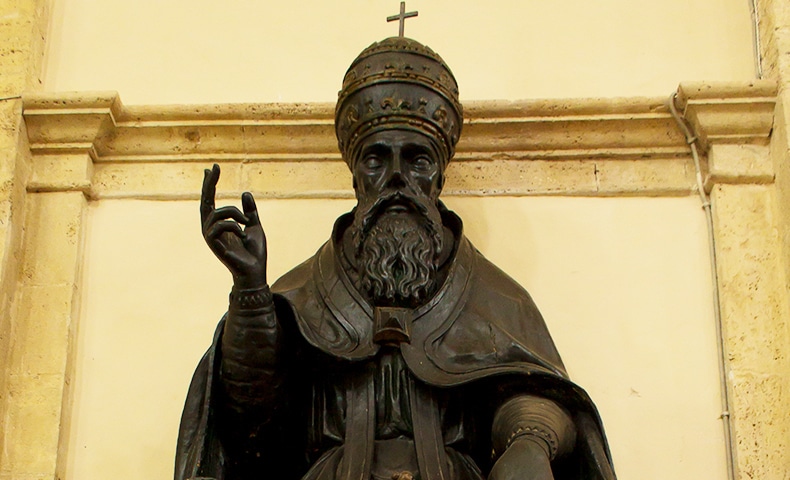Image: Statua di S. Martino Papa nel tempio di Santa Maria della Consolazione, Roma | photo by Daniel Aldrighetti
Saint of the Day for April 13
(d. September 16, 655)
Saint Martin I’s Story
When Saint Martin I became pope in 649, Constantinople was the capital of the Byzantine empire and the patriarch of Constantinople was the most influential Church leader in the eastern Christian world. The struggles that existed within the Church at that time were magnified by the close cooperation of emperor and patriarch.
A teaching, strongly supported in the East, held that Jesus Christ had no human will. Twice, emperors had officially favored this position: Heraclius by publishing a formula of faith, and Constans II by silencing the issue of one oro wills in Christ.
Shortly after assuming the office of the papacy—which he did without first being confirmed by the emperor—Saint Martin I held a council at the Lateran in which the imperial documents were censured, and in which the patriarch of Constantinople and two of his predecessors were condemned. In response, Constans II first tried to turn bishops and people against the pope.
Failing in this and in an attempt to kill the pope, the emperor sent troops to Rome to seize Saint Martin I and to bring him back to Constantinople. Already in poor health, Martin offered no resistance, returned with Calliopas, the exarch of Constantinople, and was then submitted to various imprisonments, tortures, and hardships. Although condemned to death and with some of the imposed torture already carried out, Martin was saved from execution by the pleas of a repentant Paul, patriarch of Constantinople, who was himself gravely ill.
Tortures and cruel treatment having taken their toll, Saint Martin I died shortly thereafter. He is the last of the early popes to be venerated as a martyr.
Reflection
The real significance of the word martyr comes not from the dying but from the witnessing, which the word means in its derivation. People who are willing to give up everything, their most precious possessions, their very lives, put a supreme value on the cause or belief for which they sacrifice. Martyrdom, dying for the faith, is an incidental extreme to which some have had to go to manifest their belief in Christ. A living faith, a life that exemplifies Christ’s teaching throughout, and that in spite of difficulties, is required of all Christians.
Martin refused to cut corners as a way of easing his lot, to make some accommodations with the civil rulers.


